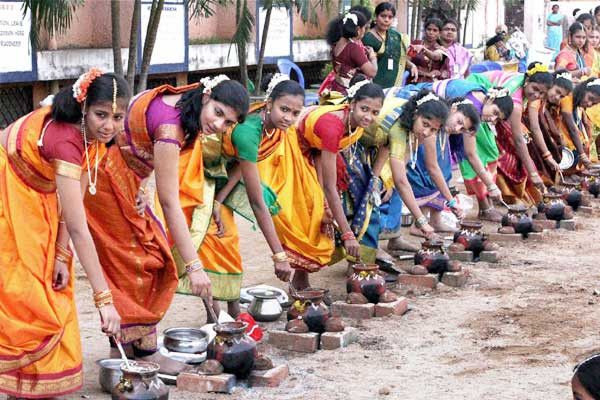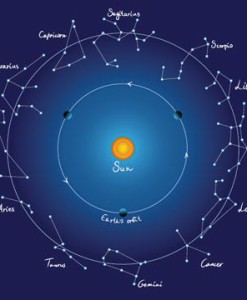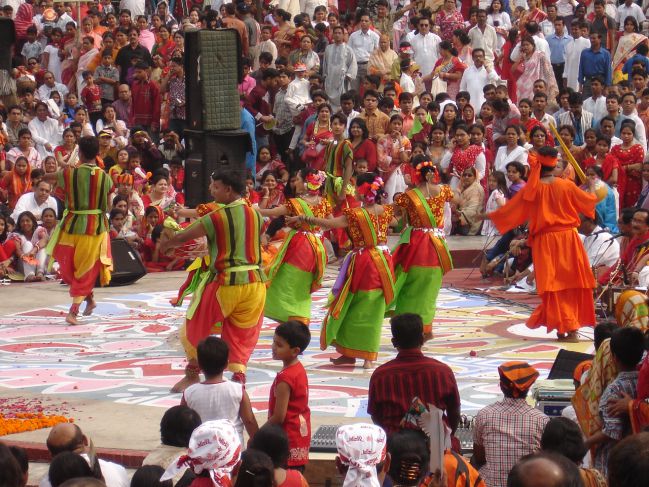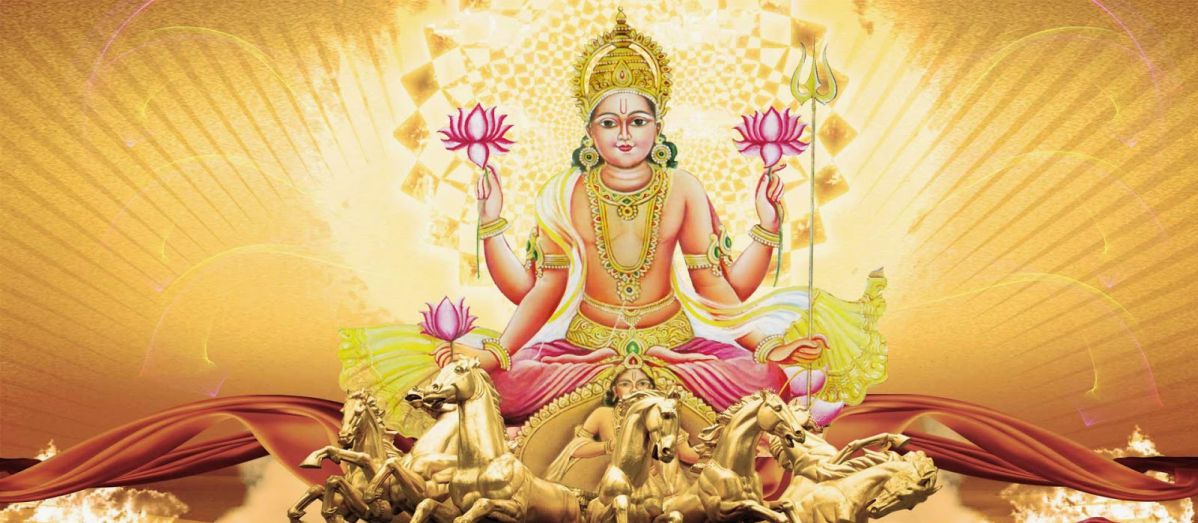No products in the cart.
Sankranti means transmigration of the Sun from one Rāshi to the next. Hence, there are 12 Sankrantis in a year. Each Sankranti is marked as the beginning of a month in the sidereal solar calendars followed in Andhra Pradesh, Karnataka, Maharashtra, Tamil Nadu, Kerala, Odisha, Punjab, Gujarat. On the other hand, in the sidereal solar Bengali calendar and Assamese calendar, a Sankranti is marked as the end of each month and the day following as the beginning of a new month.
Important Sankrantis
Makar Sankranti: Marks the transition of the Sun into Makara rashi on its celestial path, and the six-month Uttarayana period. Makara Sankranti is also called as Uttarayana – the day on which the sun begins his northward journey The traditional Indian calendar is based on lunar positions, Sankranti is a solar event. The date of Makar Sankranti remains constant over a long term, 14 January or occasionally, 15 January as the Sun begins to rise in Makara Rashi.
Mesha Sankranti: Marks the beginning of the New Year in the traditional Hindu Solar Calendar. On this day, the sun enters the sidereal Aries, or Mesha rashi. It generally falls on 14/15 April. Regional New Year festivals also take place on this day: Vaisakhi in the Punjab region, Pana Sankranti in Odisha and on the day after Mesha Sankranti, Pohela Boishakh in the Bengal region.
Dhanu Sankranti: celebrated on the first day of lunar Pausha month. In Southern Bhutan and Nepal it is celebrated by eating wild potatoes
Karka Sankranti: July 16, marks the transition of the Sun into Karka rashi. This also marks the end of the six-month Uttarayana period of Hindu calendar, and the beginning of Dakshinayana, which itself end at Makar Sankranti.
1.Makar Sankranti

According to the Hindu calendar Makar Sankranti is a festival celebrated at Magh 1st of Hindu Solar Calendar for the happiness of getting new crops for farmers. It also symbolizes the end of the winter solace which makes the day last longer than night.
Significance of Makar Sankranti
Makar Sankranti has an astrological significance, as the sun enters the Capricorn zodiac constellation on that day. This date remains almost constant with respect to the Gregorian calendar. However, precession of the Earth’s axis causes Makar Sankranti to move over the ages. A thousand years ago, Makar Sankranti was on 31 December and is now on 14 January. According to calculations, commencing the year 2050, Makar Sankranti will fall on 15 January and occasionally on 16 January.
 Makar Sankranti is a major harvest festival celebrated in various parts of India. Makara Sankranti commemorates the beginning of the harvest season and cessation of the northeast monsoon in South India. The movement of the Sun from one zodiac sign into another is called Sankranti and as the Sun moves into the Capricorn zodiac known as Makara in Sanskrit, this occasion is named as Makara Sankranti in the Indian context. It is one of the few Hindu Indian festivals which are celebrated on a fixed date i.e. 14 January
Makar Sankranti is a major harvest festival celebrated in various parts of India. Makara Sankranti commemorates the beginning of the harvest season and cessation of the northeast monsoon in South India. The movement of the Sun from one zodiac sign into another is called Sankranti and as the Sun moves into the Capricorn zodiac known as Makara in Sanskrit, this occasion is named as Makara Sankranti in the Indian context. It is one of the few Hindu Indian festivals which are celebrated on a fixed date i.e. 14 January
Makar Sankranti, apart from a harvest festival is also regarded as the beginning of an auspicious phase in Indian culture. It is said as the ‘holy phase of transition’. It marks the end of an inauspicious phase which according to the Hindu calendar begins around mid-December. It is believed that any auspicious and sacred ritual can be sanctified in any Hindu family, this day onwards. Scientifically, this day marks the beginning of warmer and longer days compared to the nights. In other words, Sankranti marks the termination of winter season and beginning of a new harvest or spring season.
All over the country, Makar Sankranti is observed with great fanfare. However, it is celebrated with distinct names and rituals in different parts of the country. In the states of northern and western India, the festival is celebrated as the Sankranti day with special zeal and fervor. The importance of this day has been signified in the ancient epics like Mahabharata also. So, apart from socio-geographical importance, this day also holds a historical and religious significance. As it is the festival of Sun God, and he is regarded as the symbol of divinity and wisdom, the festival also holds an eternal meaning to it.
2.Mesha Sankranti
Mesha Sankranti is a Hindu festival and refers to the day when the sun enters the Zodiac sign of Mesha. The day represents the vernal equinox which occurs around 21 March but the day is marked in April. The day is important in solar and lunisolar calendars followed on the subcontinent. Mesha Sankranti is a solar event and generally falls on 13 April but sometimes also falls on 14 April according to the Gregorian calendar.
Many regional calendars have two elements: lunar and solar. The lunar element is based on the movement of the moon and counts each month from either new moon to new moon, full moon to full moon,or the day after the full moon to the next full moon. The lunar element forms the basis of religious calendars and begin the year in Chaitra. Many regions begin the local new year with the commencement of the lunar calendar: Gudi Padwa in Maharashtra; Cheti Chand for the Sindhi community; and Navreh in Kashmir. In Gujarat, the regional year commences with the lunar month of Kartika after Diwali.
The solar element of lunisolar calendars begin the year in Vaisakha on Mesha Sankranti hence why the day is also called Vaisakha Sankranti. This day is observed by people across India, even in regions which begin the new year using the lunar calendar. However, some regions also begin the regional new year on Mesha Sankranti.
Mesha Sankranti: Festivals

Mesha Sankranti is observed by people to mark the solar new year irrespective of when the regional new year is observed. The Mesha sankranti festival is very important for Hindus. People bathe in waters and make pilgrimage to holy places such as Haridwar. In Bihar, the day is celebrated as Satuan which involves people bathing and then eating sattu and jaggery. The sun god is also worshipped.
New Year Festivals
- Bikhoti festival
The Bikhoti Festival of Uttrakhand involves people taking a dip in holy rivers. A popular custom involves beating symbolic stones representing demons with sticks. The fair is celebrated in various major centres including Sealdah, Bageshwar and Dwarahat and involves much singing and dancing, accompanied by local drums and other instruments.
- Vishu
Vishu of Kerala is considered a festival of light and fireworks, and decorating lights and bursting of firecrackers is part of the celebration. Other elements of Vishu include buying of new clothes for the occasion, and giving money called Vishukkaineetam, the Vishu feast or Sadya, consisting of equal proportions of salty, sweet, sour and bitter items. Feast items include Veppampoorasam, Mampazhappulissery, Vishu kanji and Vishu katta’. People also observe Vishukkani: “the first thing seen on the day of Vishu after waking up”. The Vishukkani consists of rice, fruits and vegetables, betel leaves, arecanut, metal mirror, yellow flowers called ‘konna’, holy texts and coins.
- Bohag Bihu
Bohag Bihu or Rangali Bihu marks the beginning of the Assamese New Year on April 13th. It is celebrated seven days after Vishuva Sankranti of the month of Vaisakh or locally ‘Bohag’. The three primary types of Bihu are Rongali Bihu, Kongali Bihu, and Bhogali Bihu. Each festival historically recognizes a different agricultural cycle of the paddy crops. During Rangali Bihu there are 7 pinnacle phases: ‘Chot’, ‘Raati’, ‘Goru’, ‘Manuh’, ‘Kutum’, ‘Mela’ and ‘Chera’.
- Vaisakhi
Vaisakhi of the Punjab region heralds the new year where fairs are held and Bhangra and Giddha folk dances take centre stage.
- Pana Sankranti
Pana Sankranti marks the Oriya new year in Odisha. Celebrations include filling a small pot with pana or a sweet drink of Mishri and water; consuming flour of horse gram, banana and curd. Danda Nacha or Danda Nata of Odisha is a tribal dance which is performed to mark the new year.
- Pohela Boishakh
The Bengali new year is celebrated as Pohela Boishakh, a day after Mesha Sankranti known as Boishakh Sankrant.
The festival is celebrated as a national holiday in Bangladesh. Pohela Boishakh is also known as Nobo Barsho as it is the first day of the Bengali month of Bongabdo. Fairs are organised to celebrate the event which provide entertainment including the presentation of folk songs.
3.Dhanu Sankranti

Dhanu Sankranti also known as Dhanur Sankraman is the day when Sun enters into Dhanu Rashi or the sign of Sagittarius. Dhanu Sankranti marks the beginning of the ninth month in Hindu Solar Calendar. It marks the arrival of Dhanu month in Malayalam calendar and Margashirsha and Paush month as per the calendars followed in north and western parts of India. Dhanur mas end on the Makar Sankranti day.
On Dhanu Sankranti day Surya or the Sun God is worshiped Special prayers are offered to Surya and people also take a dip in holy rivers. It is considered very auspicious to take a Sankraman Snan or the ritual bath in holy rivers like Ganga, Yamuna, Mahanadi, Godavari, Krishna, Tungabhadra, and Cauvery.
Dhanu Sankranti is of great significance in Orissa. This festival is one of the important festivals of Orissa. Special prayers and pujas are offered to Lord Jagannath on this day and is celebrated with great fervor at the Puri Jagannath Temple. In Orissa Dhanu Sankranti is celebrated on the first day of lunar Pousha month. Special delicacy made of sweetened rice flakes called Dhanu Maun is offered to Lord Jagannath in puja.
The famous Dhanu Yatra is held during this period at Baragarh town of Koshal region or Western Orissa. Though Dhanu Yatra is performed at various places in the state the one at Bargarh is the most popular Dhanu Yatra.
It is a street play based on Krishna’s visit to Mathura to witness the ceremony of ‘Bow’ organised by Kansa as described in the ‘Bhagawat Purana’. It is celebrated from Pousa Sukla SasthTithi i.e. sixth day of bright fortnight of Pousa to Pousa Purnima i.e. the full moon day of Pousa and is carried out for ten to eleven days continuously. Dhanu Yatra is the biggest open-air theatre in the known history of the world. The whole topography of Bargarh within a radius of about five to six kilometres turns into one big theatre during these eleven days.
Kansa had invited Krishna and Balaram on the occasion of Dhanu Yatra with an intention of killing them during the Yatra. Hence it is known as Dhanu Yatra. This annual mass festival enacts episodes of the epic Mahabharata from Lord Krishna’s birth to the killing of the cruel demon king Kansa by Krishna. During this occasion Bargarh town turns into Mathura. Jira River is on the border of Bargarh town becomes Jamuna. On the other side of the river Jira a small village called Ambapali becomes Gopapura. There is a mango orchard, which serves as Brundavan and a pond is used as Kalindi Sarovar. Various scenes mentioned the Bhagavata Purana is enacted in different places of Bargarh town and Ambapali village. Almost all the people in the town are part of the play.
4.Karka Sankranti
The day when Sun enters the Karka rashi is called Karka Sankranti. This day starts the southern journey of the Sun God, which is also called the Dakshinayana. It is believed that Gods go to sleep during phase of six months. Lord Vishnu is worshipped on this day along with devotees fasting for blessings. This day is Deva Sayani Ekadashi as well. It is said that it is extremely fulfilling to donate food and clothes on this day.
Karka Sankranti is the start of the monsoon season that marks the time agriculture, which is an important source of income in the country. Dakshinayana ends with makar Sankranti and uttarayan follows. During all the four months of Dakshinayana, people worship Lord Vishnu. Individuals who want to do Pitra tarpan for their ancestors wait for Karka Sankranti to provide the departed souls some peace.
Karka Sankranti Rituals of the Day
- Devotees should take holy bath during sunrise to wash away all sins and start afresh.
- On this day, Lord Vishnu is worshiped and Vishnu Sahsra nama stotram is chanted during the puja. This brings peace and better luck to the devotees.
- It is said, to do all kinds of daan on this day including grains, clothes, and oil especially to Brahmins.
- Along with Lord Vishnu, the Sun God is also prayed and offered puja for health and prosperity on Karka Sankranti.
- One should avoid starting anything new or important on this day, as the day is not very auspicious.
The purpose of puja and fasting on Karka Sankranti is to get relief from all bad aspects that can affect you or your family. There are many temples dedicated to Lord Vishnu that are flooded with devotees to offer puja on this day. In addition, Lord Varaha Swamy is worshipped on Karkataka Sankranti.






